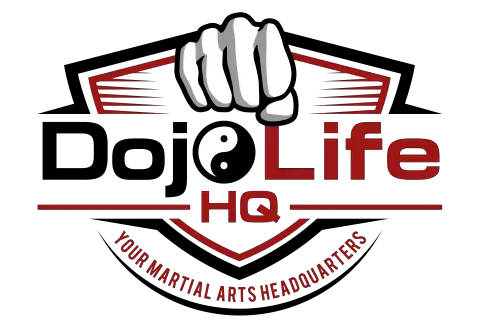
Kickboxing offers a full-body workout with many benefits. But because it is highly demanding and involves the extensive use of the hips in delivering powerful kicks, it makes sense to ask, is kickboxing bad for your hips?
Here’s what I’ve seen:
Kickboxing is not bad for the hips. In fact, it is a very effective means of exercising the hips. However, throwing an effective kick is a skill. As such, it is possible to injure the hips if one performs the kicks improperly.
The important thing is to ensure that one learns kickboxing from seasoned and certified instructors so that the right techniques can be employed each time one throws a kick.
It’s also always best to start slow and focus on the accuracy of your kicks first. Power and speed can come later. Focusing on power and speed when you don’t have the proper kicking technique down is a recipe for injury.
In this article, we’ll explore what kickboxing does to the body, whether it’s okay to kickbox if one’s hips hurt, how to strengthen one’s hips, and similar themes around whether kickboxing is bad for your hips.
Let the fun begin…
“Kickboxing 🥊 has made me reach my goals and has made my weight loss sustainable. I am so thankful 🙏 for the journey so far and the amazing friends along the way! After a workout at ILKB I feel that I am ready to take on the day with confidence and energy!” 😎⚡⚡ -Katerina pic.twitter.com/P8eREVuKNR
— iLoveKickboxing Frederick (@ILKBFrederick) December 7, 2019
What does kickboxing do to your body?
Kickboxing improves cardiovascular health, muscle strength, balance, weight loss, confidence, and self-esteem. It can also improve sleep quality and is believed to have a positive effect on mental health.
(source)
However, like most contact sports, the possibility of injuries is ever-present.
One’s cardiovascular health would be increased by participating in kickboxing at least three times each week. A study shows that it increases maximum oxygen uptake.
The maximum oxygen uptake is a measure of the amount of oxygen one could use during physical activity. The higher it is, the more efficiently the body is using oxygen.
It also helps with increased muscle strength.
It’s an intense full-body workout, so this shouldn’t be surprising. It strengthens and tones your core, glutes, legs, and arms. You’re constantly moving as you train. Naturally, you’re also burning calories. So, it’s great for weight loss, too.
Don’t be surprised if the belly and love handles fade away in time.
But, if you’re not very careful, you could also be injured. The most common injuries are strains in the back, shoulders, knees, hips, and ankles.
I spent a little over 10 hours training Savate (French kickboxing) with the incredible Nicolas Saignac this weekend. My hips are dead. pic.twitter.com/fO8jaUFynQ
— Moisés Chiullán 肖振藩 (@moiseschiu) November 5, 2017
Should I do kickboxing if my hip hurts?
Do not practice kickboxing with hip pain. The hip is one of the key areas of the body used when kickboxing, and using the hips in that way while injured could make the injury worse.
Always check with a doctor if you have pain or an obvious injury.
Kickboxing is an intense-full-body workout. As reflected in the name, kicks are a key part of it. To kick very well, the hip is one of the joints that must be in perfect condition. So, it’s not advisable to kickbox when your hip hurts.
If you’re intent on not skipping any training session, perhaps you could work on upper-body drills that don’t require you to move your legs at all.
But, at the risk of stating the obvious, seeing a doc should be the first thing to do. After all, you can always train to your heart’s desire when your hip is healed.
Why is it important to learn martial arts?
It boosts confidence, builds resilience and focus, and it improves strength, flexibility, and awareness.
Above all, you learn how to defend yourself. In a recent article of mine, I explained how it helps with some of the benefits I just mentioned, and I addressed questions such as whether learning martial arts makes you violent and others of a similar nature.
Just click the link to read it on my site.
tough match. I think he loses this one. #kickboxing great for hand eye, hips, footspeed. after a year he’s loving it. pic.twitter.com/V6K0kAhxF5
— Michael Holtz (@holtzmichael) September 20, 2019
How can I strengthen my hip joint?
The hip joint can be strengthened through exercises such as swimming, yoga, leg lifts, abdominal curls, and stretches.
In fact, there are a variety of ways to strengthen the hip joint. But, if you have not been exercising before, please consult your doctor before starting any exercise regime.
The muscles connected to the hip are critical in their proper functioning. So, a great thing to focus on if you want stronger hip joints is to exercise the muscles around them. When these are strong, your hips have less work to do in supporting your body weight.
Before you do any hip strengthening exercise, you must warm up first. The following are some exercises. They are not meant to be done in a day. They can be split into two-day sessions.
- Bulgarian Split Squat — 12-15 reps each leg
- Step Up to Reverse Lunge — 12-15 reps each leg
- Dumbbell Sumo Squat — 8-10 reps each leg
- Kickstand Romanian Deadlift — 5-8 reps each leg
- Explosive Sprinters Lunge — 5-8 reps each leg
- Banded Jump Squat — 5-8 reps each leg
- Kettlebell Swing — 10-12 reps
- Lateral Lunge — 10-12 reps
- Banded Marching Hip Bridge — 10-12 reps
source: self.com
*nostalgically scrolls through old pics because i miss kickboxing every day* pic.twitter.com/78ywWJ0Zjl
— Victoria says ditto (@VicWeenieS) January 17, 2021
Is it OK to do kickboxing every day?
While a person can do kickboxing every day, it is better to allow the body to rest between workouts to get the maximum benefits from the exercises. When just getting started, ease into it 2-3 days a week and gradually increase the number of days.
2 to 3 days a week is adequate if the goal is to maintain fitness. That’s approximately 2 to 3 sessions at the kickboxing studio. It will give your body enough time to rest.
This is in line with what the American Heart Association recommends: That one gets at least 150-minutes of moderate-intensity aerobic activity or 75 minutes of vigorous activity each week.
They suggest that either or a combination of both, spread out over a week, is ideal.
What if you’re planning to be a pro kickboxer or at least become highly proficient in it within a relatively short period? You can do it every day.
But, there’s a caveat: You must have enough time to rest, and you may also have to adjust how you train. The reality is that all training sessions are not created equal.
So, you could alternate between days when you’re in a high-intensity mode and days when your training sessions are a bit less intense. That way, you’re not overexerting your body each day.
Is Muay Thai bad for your shins?
In a recent article of mine, I showed that it is not, but that it does take some time to condition your shins to a point where they’re not painful. You may want to use shin guards, but that would prolong the time the conditioning takes.
I also shared how long the conditioning would take and a couple of other riveting issues.
Just click the link to read it on my site.
Over 50 and want to get fitter? Active Lifestyles is a programme of weekly classes including tai chi, yoga, pilates, kickboxing, keep fit, zumba and walking.
https://t.co/0Kao2uyifQ pic.twitter.com/0RX79wUQiu— Wandsworth Council (@wandbc) February 13, 2020
What exercise is good for bad hips?
The best exercises for bad hips include swimming, walking, Tai chi, a stationary bike, hip extension, chair stand, and gentle yoga.
But of course, check with your doctor to make sure your new plans won’t make anything worse.
Swimming is a full-body workout that naturally helps with your hips. You’ll most probably have to swim a lot less fast than you’re accustomed to so that you don’t make things worse.
Walking is another great one. You can do it indoors or outdoors. Of course, outdoors is better as you would have access to fresh air and that would make the experience more enjoyable.
Tai chi is a slow, graceful martial art that’s akin to a dance.
There’s no risk to your hips, and it can be practiced at home. In addition to helping with your hips, it offers full-body cardio and helps make you more flexible.
A stationary bike would, without any stress, help strengthen your legs muscles and help heal your bad hips.
Karate vs. Kickboxing: Which one is better for self-defense?
In a recent article, I explained why Kickboxing is better. It’s a blend of Karate, Boxing, and Muay Thai. So, it has an array of the most effective moves in these 3 martial arts. Of course, it’s better than just knowing Karate.
Just click the link to read it on my site.
Conclusion
We looked at whether kickboxing is bad for your hips.
No, it is not. In fact, it’s a way of ensuring the hips get enough exercise. But, if you don’t learn the proper way to throw kicks, you could injure your hips. It is just a case of learning the correct way.
We checked out how kickboxing affects the body, whether you should do it if your hip hurts, and how to strengthen your hip joints.
Then, we checked out whether it’s okay to do it every day, and we wrapped things up by looking at exercises that are good for bad hips.
